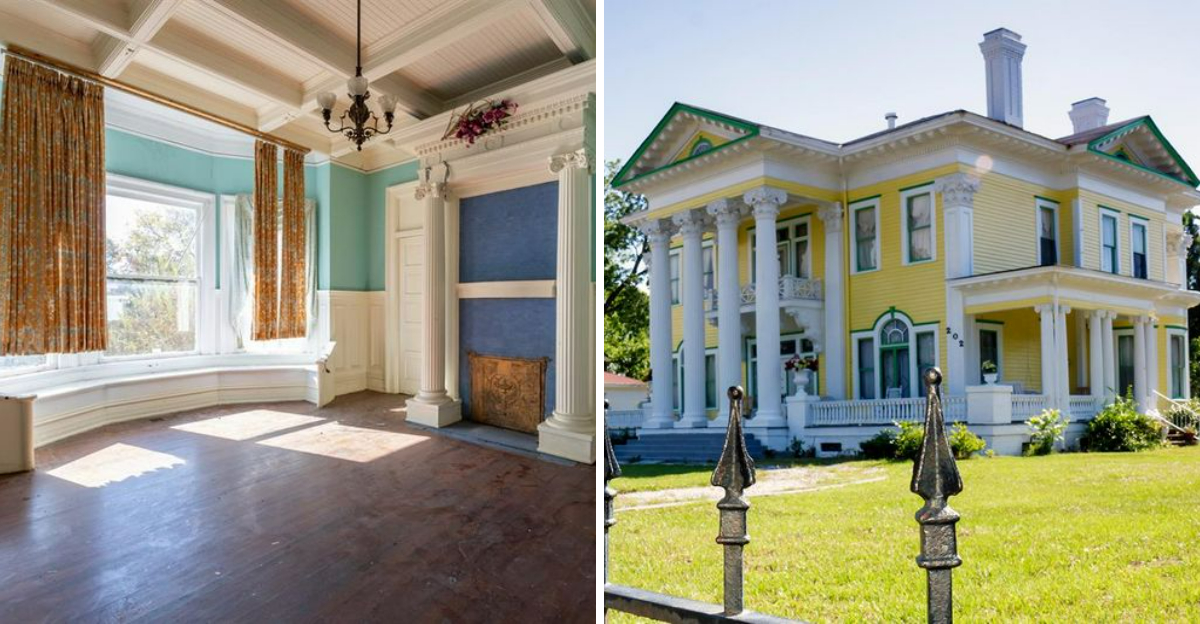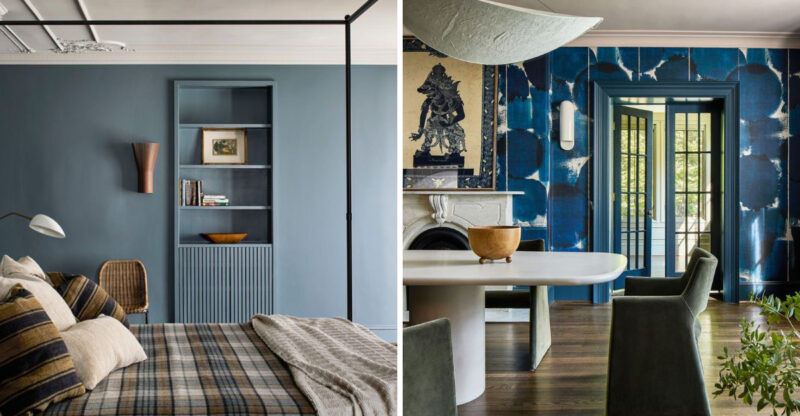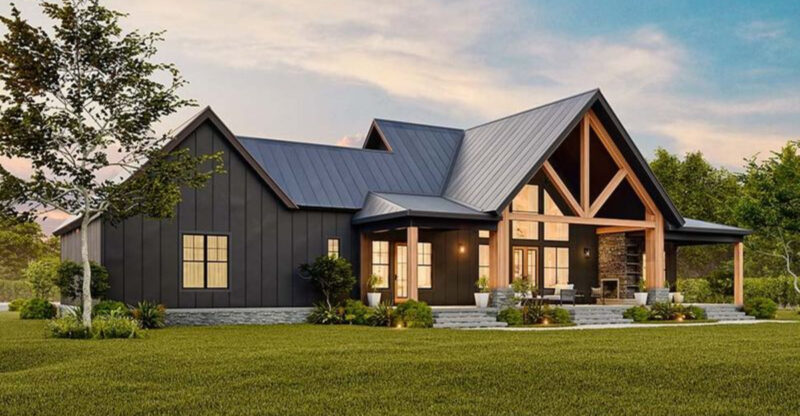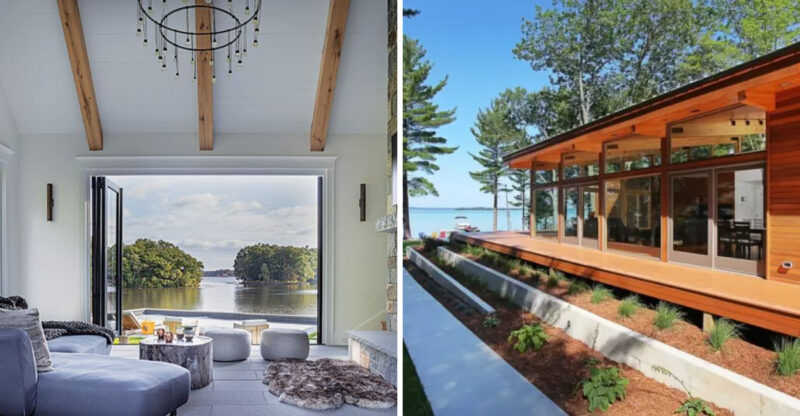Step Inside This 120-Year-Old Alabama Mansion And Peek Into History

The Rainer-Lewis House stands proudly in Alabama, a beautiful reminder of life over a century ago. Built around 1904, this mansion holds countless stories within its walls and has witnessed generations of change.
Walking through its rooms feels like stepping back in time, where every corner whispers secrets of the past.
Grand Victorian Architecture
You can spot the mansion’s stunning beauty from the street. Intricate woodwork decorates the porch, while tall windows let sunlight pour into every room.
The turrets reach toward the sky like castle towers. Architects back then built homes to impress, and this one certainly does its job with style and elegance that still captivates visitors today.
Original Hardwood Floors
Walking across these floors connects you directly to the past. Each plank was carefully laid by hand over 120 years ago, and the wood still gleams beautifully.
You’ll notice the natural wear patterns that tell stories of countless footsteps. Modern homes rarely feature such quality craftsmanship, making these floors a treasure worth preserving for future generations.
Hand-Carved Staircase
Craftsmen spent months creating this masterpiece. The banister features detailed carvings that showcase incredible skill and patience you rarely see anymore.
Running your hand along the smooth wood reveals every curve and detail. This staircase served as the home’s centerpiece, greeting guests with elegance and demonstrating the family’s wealth and refined taste.
Period-Authentic Furnishings
Every piece of furniture helps recreate the original atmosphere. Velvet chairs, mahogany tables, and delicate lamps fill the rooms with authentic charm from the early 1900s.
Collectors and historians worked hard to find appropriate pieces. You can almost imagine the Rainer and Lewis families sitting here, discussing their day over afternoon tea.
Ornate Stained Glass Windows
Sunlight dances through these magnificent windows, casting rainbow patterns across the walls and floors throughout the day. Craftsmen created each piece by hand over 120 years ago, carefully selecting vibrant glass in blues, reds, greens, and golds to form intricate designs.
Many feature floral motifs and geometric shapes popular during the Victorian era. The artistry required incredible skill, as workers had to cut, shape, and arrange hundreds of glass fragments into cohesive pictures.
Today, these windows remain remarkably preserved, offering visitors a breathtaking glimpse into the artistic standards of the late 1800s. Standing before them feels almost magical as colored light transforms ordinary rooms into something extraordinary.
Grand Entrance Hall
Walking through the front door feels like crossing a bridge between centuries. The entrance hall greets visitors with towering ceilings that seem to reach the sky, immediately signaling the wealth and status of the original owners.
Rich wooden panels line the walls, their deep colors glowing warmly even after more than a hundred years. An elaborate chandelier hangs overhead, its crystals catching the light and scattering rainbows across the space. The craftsmanship is breathtaking, with intricate moldings and decorative touches that modern builders rarely attempt.
This grand entrance was designed to impress guests and set the tone for the entire home. It served as the first introduction to the family’s taste and social standing in the community.
Master Bedroom with Original Victorian Wallpaper
Behind the carved wooden door lies a bedroom frozen in time, where delicate Victorian wallpaper still clings to the walls after more than a hundred years. The patterns tell stories of an era when every detail mattered, featuring intricate floral designs in soft pastels that were painstakingly applied by hand.
Original gas light fixtures stand beside the bed, now converted to electricity but still maintaining their antique charm. The room’s tall windows let in streams of Southern sunlight that dance across a beautiful four-poster bed.
Walking into this space feels like stepping into a time machine. You can almost hear the rustling of long skirts and imagine families preparing for the day ahead in this very room centuries ago.
Art Nouveau Decorative Details
Flowing lines and nature-inspired designs greet visitors throughout this magnificent home, showcasing the Art Nouveau movement that swept across America in the early 1900s. Unlike the rigid Victorian styles that came before, Art Nouveau celebrated curves, plants, and organic shapes that mimicked the beauty found in gardens and forests.
Look closely at the door frames, light fixtures, and decorative panels. You will spot delicate flowers, twisting vines, and graceful swoops that seem to dance across the walls. These artistic touches were not mass-produced but carefully crafted by skilled artisans who understood that homes should feel alive and connected to nature.
This mansion preserves these rare examples perfectly, reminding us how people once valued beauty in everyday spaces.
Wrap-Around Porch with Southern Charm
Picture yourself sitting in a rocking chair with a cool breeze on a warm Alabama afternoon. The wrap-around porch of this mansion was the heart of social life back in the day. Families gathered here to chat with neighbors, sip lemonade, and escape the summer heat before air conditioning existed.
Built with sturdy wooden columns and intricate railings, the porch showcases craftsmanship that modern homes rarely replicate. You can still see the original floorboards that have supported generations of footsteps. The design allowed air to flow through the house naturally, keeping rooms cooler during hot months.
Today, visitors can imagine what life was like when porches served as outdoor living rooms and community gathering spots.
Lush Period Gardens
Gardens provided both beauty and purpose for families. Flowers brightened the landscape while vegetable patches supplied fresh food, and shaded paths offered peaceful spots for afternoon strolls and quiet contemplation.
Gardeners maintained these grounds year-round with dedication. You can still see descendants of the original plantings, connecting today’s visitors to those who tended these same flowers generations ago.






